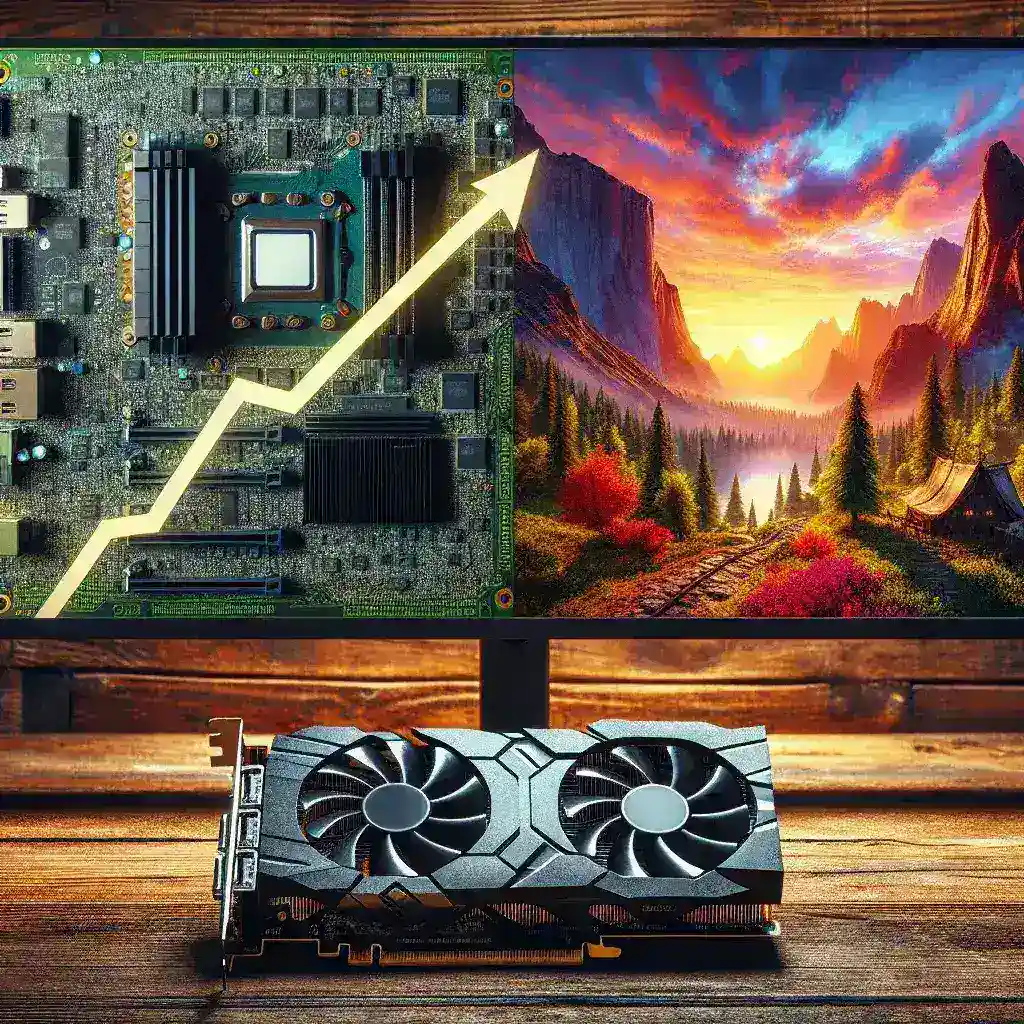The gaming industry has seen a meteoric rise in graphics quality and performance demands over the years. One of the vital elements contributing to enhanced gaming experiences is the memory bandwidth of the Graphics Processing Unit (GPU). But what exactly is GPU memory bandwidth, and what role does it play in gaming performance? Let’s delve deeper into this crucial component.
Understanding GPU Memory Bandwidth
Memory bandwidth refers to the rate at which data can be read from or stored into a semiconductor memory by a processor. For GPUs, higher bandwidth allows quick access to data required for rendering images, processing physics, and running complex algorithms in real-time applications like gaming.
Significance of Memory Bandwidth in Gaming Performance
- Impact on Frame Rates: Higher memory bandwidth ensures that more data can be accessed quickly, leading to smoother and more consistent frame rates. This is especially crucial in graphically-intensive games where large amounts of textures and assets need to be processed.
- Texture Loading: Complex textures and large assets can be loaded faster, offering a richer visual experience. This reduces lag and pop-in effects often seen in open-world games.
- Overall Gaming Experience: From faster load times to more immersive graphics, higher memory bandwidth provides noticeable improvements in nearly all aspects of gaming.
Memory Bandwidth vs. VRAM: What’s the Difference?
Many people often confuse GPU memory bandwidth with VRAM (Video RAM) capacity. While both are crucial, they serve different purposes. VRAM is the amount of memory allocated to store image data, textures, and other assets. In contrast, memory bandwidth dictates how fast this data can be accessed or transferred between the GPU and its memory.
- VRAM Capacity: Essential for storing high-resolution textures and assets.
- Memory Bandwidth: Determines how quickly this stored data can be accessed for rendering each frame.
Factors Affecting GPU Memory Bandwidth
Memory Type
The type of memory in a GPU significantly affects its bandwidth. Common types are GDDR5, GDDR6, and the latest GDDR6X and HBM (High Bandwidth Memory). Each subsequent generation offers improvements in bandwidth and efficiency.
Bus Width
The memory bus width refers to the number of bits that can be accessed simultaneously. A wider bus allows more data to be transferred per clock cycle, thus increasing the memory bandwidth.
Clock Speed
The memory clock speed defines how fast the memory can operate. Higher clock speeds enable quicker data transfer rates. Combining high clock speeds with a wide bus width results in superior memory bandwidth.
Comparison of GPU Memory Bandwidths
The following table provides a comparative look at the memory bandwidth of several popular gaming GPUs.
| GPU Model | Memory Type | Bus Width | Clock Speed (Effective) | Memory Bandwidth (GB/s) |
|---|---|---|---|---|
| NVIDIA GeForce RTX 3080 | GDDR6X | 320-bit | 19 Gbps | 760 GB/s |
| AMD Radeon RX 5700 XT | GDDR6 | 256-bit | 14 Gbps | 448 GB/s |
| NVIDIA GeForce GTX 1660 Ti | GDDR6 | 192-bit | 12 Gbps | 288 GB/s |
| AMD Radeon RX 6800 XT | GDDR6 | 256-bit | 16 Gbps | 512 GB/s |
Optimizing Your Gaming System
To get the most out of your gaming system, pay attention to these aspects:
- Monitor Resolution: Higher resolutions demand more from the GPU. Ensure your GPU’s memory bandwidth can handle the resolution you play at to avoid bottlenecks.
- Game Settings: Tweaking graphic settings to balance between visual quality and performance can prevent the GPU from being overwhelmed, aiding in smoother gameplay.
- Cooling Solutions: Overheating can throttle performance. Effective cooling solutions can help maintain optimal bandwidth utilization.
Future Trends in GPU Memory Bandwidth
With increasing demands for higher resolution textures, ray tracing, and virtual reality, the need for greater GPU memory bandwidth will continue to grow. Developments like HBM2 and future iterations are expected to push memory bandwidth even further, ensuring that future GPUs can meet the escalating demands of next-gen gaming experiences.
Conclusion
GPU memory bandwidth is a pivotal factor in gaming performance. From smoother frame rates to faster texture loading, a higher memory bandwidth can significantly enhance the overall gaming experience. By understanding and optimizing memory bandwidth, you can ensure that your gaming system stays ahead of the curve, delivering exceptional performance for years to come.

